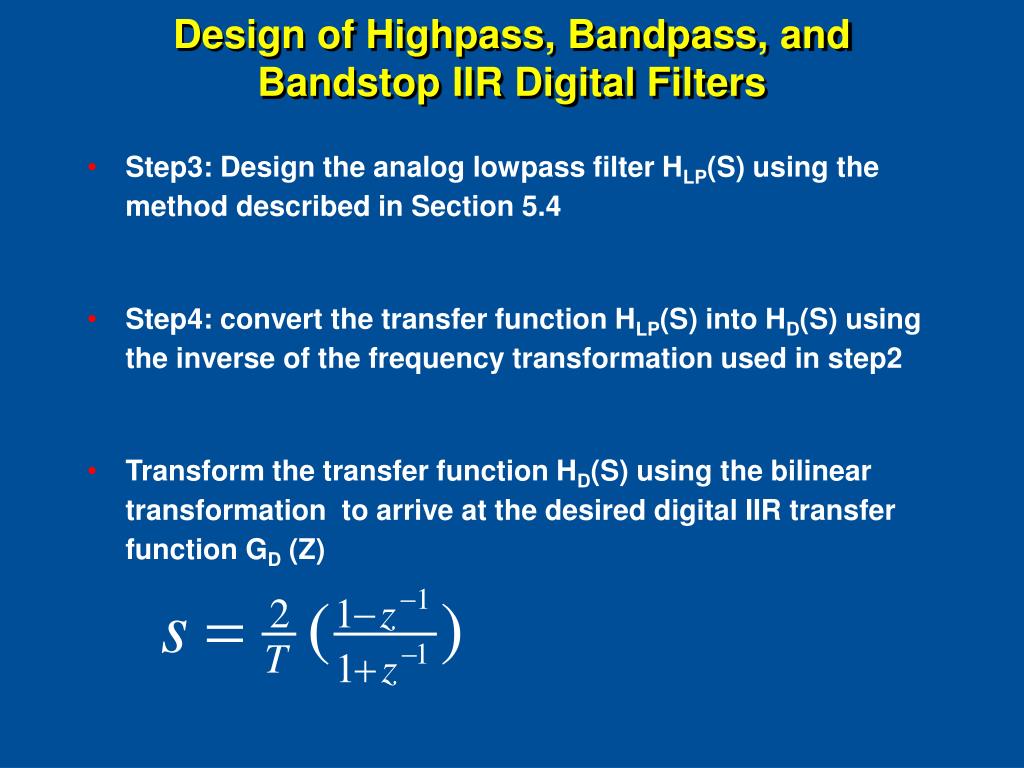
However, FIR filters suffer from low efficiency, and creating an FIR to meet a given spec requires much more hardware than an equivalent IIR filter. The transfer function of an FIR filter contains only zeros and either no poles or poles only at the origin.Īn FIR filter with symmetric coefficients is guaranteed to provide a linear phase response, which can be very important in some applications. The response of an FIR filter to δ, denoted as h, will decay to zero after a finite number of samples. If we define the discrete time impulse function as Therefore, only very specific analog filters are capable of implementing an FIR filter. There is no equivalent in continuous-time systems. There are two types of filters in the digital realm: Finite Impulse Response (FIR) filters and Infinite Impulse Response (IIR) filters.įIR filters are specific to sampled systems. 1.2.1 Filtering a time-series in Octave/Sciplotĭigital Filter Types.

1.2 IIR Filters (infinite impulse response filter).“DESIGN OF NONRECURSIVE (FIR FILTERS)” at /SupMaterials/Slides/DSP-Ch09-S3,4.pdf. Chamira Edussooriya in 2016 at the Department of Electronic and Telecommunication Engineering, University of Moratuwa References You can find the complete code for the filter design at Īcknowledgment: This content was originally submitted as partial fulfillment for the module EN2570: Digital Signal Processing taught by Dr. Stopband ripples distort the signals that need attenuation.Non-zero magnitude response in the stopband for the designed filter.Passband ripples cause undesirable modifications to the required part of the spectrum.

There is a slight difference between ideally expected output and the obtained one due to the following reasons. It is evident from the results shown in figure 5 that the filter blocks the undesired signals and passed the signals within the passband.

The filter designed for the purpose of this assignment truly acts as a bandpass filter of the stipulated parameters.

Image 3 shows the actual filtered output which closely resembles the expected output. The second image shows the frequency spectrum of the expected output where only the signal within the passband gets passed to the output. In figure 5 the first image shows the frequency spectrum of the input signal which is a combination of 3 sinusoids. Figure 3 shows the ripples in the passband even though they are invisible in figure 1. In figure 1 it can be seen that the frequency spectrum of the filter resembles a bandpass filter.


 0 kommentar(er)
0 kommentar(er)
